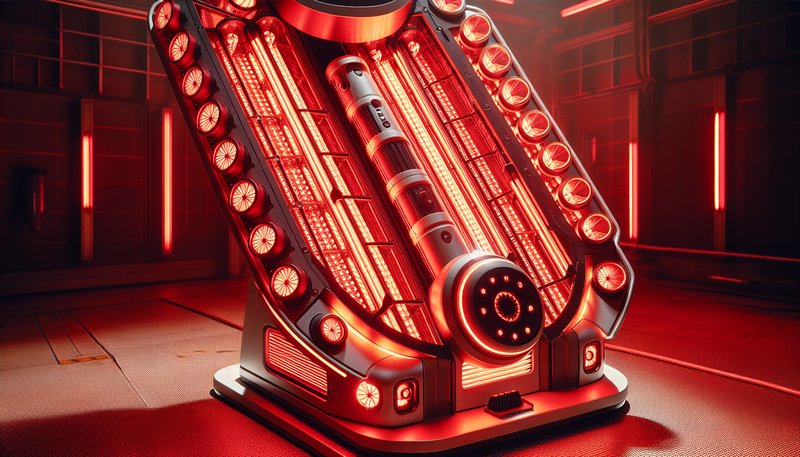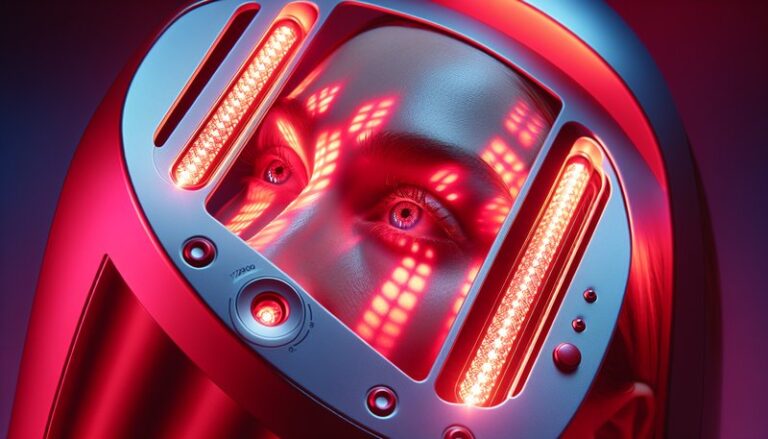Is Red Light Therapy Infrared?
Is red light therapy truly synonymous with infrared therapy, or are they distinct treatments altogether?
In this article, we will explore the nuances of red light therapy and infrared therapy, examining their definitions, benefits, and whether they overlap. By the end, you will have a comprehensive understanding of both therapies and their unique features.
Key Takeaways
- Red light therapy primarily uses red wavelengths of light, while infrared therapy utilizes infrared wavelengths, although there is some overlap.
- Both therapies offer unique health benefits, including pain relief, skin rejuvenation, and improved healing.
- Understanding the differences can help you choose the best therapy based on your needs.
What is Red Light Therapy?
Red light therapy (RLT) is a treatment method that utilizes specific wavelengths of red light, typically between 600 and 650 nanometers, to promote healing and regeneration in the body. This therapy is often used for conditions such as skin damage, inflammation, and pain relief.
Red light therapy is non-invasive and has gained popularity due to its potential to improve various health issues without the side effects commonly associated with pharmaceutical treatments.
In the context of infrared therapy, it’s essential to note that while red light is visible, infrared light is not, as it lies just beyond the visible spectrum (ranging from about 700 nanometers to over 1,000 nanometers). Both therapies utilize light, yet they each work within different parameters.
What are the Benefits of Red Light Therapy?
The benefits of red light therapy are extensive, making it a popular choice among those looking to improve their health and well-being.
Pain Relief
Red light therapy can reduce inflammation and alleviate chronic pain conditions. Clinical studies have shown significant results in conditions like arthritis and sports injuries, where patients experience reduced pain after consistent treatment.
Skin Rejuvenation
RLT has been widely used for skin health, promoting collagen production and reducing wrinkles. Users report improvements in skin texture and tone, as well as reduced signs of aging.
Enhanced Healing and Recovery
Athletes and physical therapy patients commonly use RLT to speed up recovery times after injuries. The therapy stimulates cellular repair processes, allowing tissues to heal more effectively.
Improved Mood and Sleep
There is emerging evidence suggesting that red light therapy may positively affect mood by influencing melatonin production, leading to better sleep patterns for many users.
Is it Possible to Use Red Light Therapy for Infrared Benefits?
While red light therapy operates in the visible spectrum, it does share some similar benefits with infrared therapy. For instance, both can promote healing and reduce inflammation, although the mechanisms of action may differ based on the wavelengths of light used.
What are the Advantages of Using Red Light for Infrared Benefits?
Red light therapy can provide enhanced cellular function and tissue repair, similar to those achieved by infrared light. Here are some benefits often associated with using red light:
Non-invasive and Easy to Use
RLT devices are often compact and can be used comfortably at home without professional supervision.
Minimal Side Effects
When used correctly, red light therapy typically does not lead to significant side effects, making it a safe alternative for many people.
Cost-effective Option
Compared to some infrared devices, red light therapy devices may be less expensive and more accessible for individual use.
What are the Disadvantages of Using Red Light Therapy Instead of Infrared?
While red light therapy has its advantages, there are notable limitations that one should be aware of.
See the whole article Difference Between Infrared and Red Light Therapy
Limited Penetration Depth
Red light can penetrate skin and superficially located tissues, but it may not reach deeper tissues as effectively as infrared wavelengths, which can target muscles and joints.
Specificity of Conditions Treated
Some conditions may respond better to infrared therapy, especially those involving deeper tissues or thermal benefits from infrared heat.
Variability in Device Quality
The effectiveness of red light therapy often depends on the quality of the device being used. Not all devices provide consistent wavelengths or intensities.
What are the Things to Consider Before Choosing Red Light Therapy?
Before opting for red light therapy, several factors should be taken into account to ensure it meets your specific needs.
Treatment Goals
Understand what you hope to achieve with red light therapy, whether it’s pain relief, skin improvement, or another benefit.
Device Quality
Research and choose a reputable device. Not all red light devices have the same output, and quality varies significantly.
Consult with a Healthcare Professional
It’s advisable to speak with a healthcare provider, particularly if you have existing medical conditions or concerns about using light therapy.
Read all about it Best Red Light Therapy Devices
What are the Alternatives to Red Light Therapy?
If red light therapy does not seem suitable for your needs, there are alternative options to consider.
Infrared Therapy
Infrared therapy utilizes different wavelengths to provide benefits such as deep tissue heating and pain relief. It might be more appropriate for specific pain conditions.
Cold Laser Therapy
This therapy employs low-level laser light to reduce inflammation and promote healing, similar to red light therapy but with different mechanisms of action.
Ultrasound Therapy
Mostly used in physical therapy settings, ultrasound therapy can provide pain relief and promote tissue healing through deep tissue penetration.
Conclusion: Is it Recommended to Use Red Light Therapy?
Red light therapy presents numerous benefits, particularly for skin health and pain relief, making it a worthy option for many seeking alternative treatments. However, it is important to recognize the limitations when compared to infrared therapy, especially for issues requiring deeper tissue penetration. Ultimately, choosing the right therapy depends on individual needs and conditions.
Frequently Asked Questions
Can red light therapy be used for all skin types?
Yes, red light therapy is generally safe and effective for most skin types, though it’s always wise to consult with a dermatologist for personalized advice.
How often should one use red light therapy for optimal results?
Typically, it is recommended to use red light therapy several times a week or as directed by a healthcare professional for noticeable results.
Are there any contraindications for red light therapy?
Individuals with certain medical conditions, such as those on specific medications that increase light sensitivity, should consult a healthcare provider before starting therapy.
How long does a typical red light therapy session last?
Most treatment sessions last between 10 to 30 minutes, depending on the device used and the area being treated.






